What Is E Mathematical Constant Pdf
Math has many important constants that give the discipline structure, like pi and i, the imaginary number equal to the square root of -1. But one constant that's equally important, though perhaps lesser known, is Euler's constant, e.
➡ You love numbers. So do we. Let's nerd out over numbers together.
It shows up all the time in math and physics, most commonly as a base in logarithmic and exponential functions. It's used to calculate compounding interest, the rate of radioactive decay, and the amount of time it takes to discharge a capacitor. As Stefanie Reichert puts it in Nature Physics, "we cannot escape Euler's number."
But where does Euler's constant originate from? And what exactly is it?
What Is Euler's Constant?
This content is imported from YouTube. You may be able to find the same content in another format, or you may be able to find more information, at their web site.
Euler's constant—which you'll also see some math experts refer to as Euler's number—is an irrational number, meaning you can't reduce it to a simple fraction. Just like pi, e's decimals go on forever without repeating. If you want to get technical, this is what e looks like to the 100th decimal point:
2.71828182845904523536028747135266249775724709369995957
49669676277240766303535475945713821785251664274...
If you've ever taken an entry level calculus course, you've probably run into Euler's constant, since it's the base for the natural logarithms. It looks like this: e ln x = x.
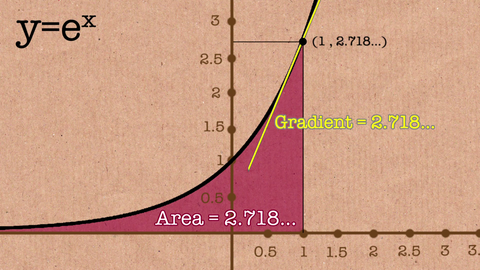
Numberphile YouTube
While graphing the equation y=ex , you'll find the slope of that curve at any given point is also ex , and the area under the curve from negative infinity up to x is also ex . Euler's constant is the only number in all of mathematics that can be plugged into the equation y=nx for which this pattern is true.
Who Discovered Euler's Constant?

ilbusca Getty Images
The story of e is a bit convoluted and includes the contributions of three mathematicians: John Napier, Jacob Bernoulli, and Leonard Euler. For the long version, check out this piece in Cantor's Paradise, a Medium publication focused on math. For the short version, read on.
In the 17th century, Napier, a Scottish mathematician, physicist, and astronomer, began looking for a simpler way to multiply very large numbers. Specifically, he wanted to find a shortcut for exponents. While Napier didn't discover the number e, he did come up with a list of logarithms that he unknowingly calculated with the constant. He published his work, Mirifici Logarithmorum Canonis Descriptio, in 1614.
The Best Math Books

Infinite Powers: How Calculus Reveals the Secrets of the Universe
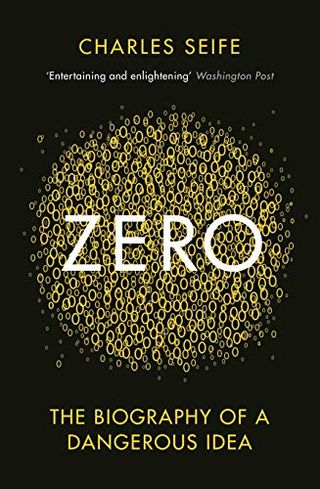
Zero : The Biography of a Dangerous Idea
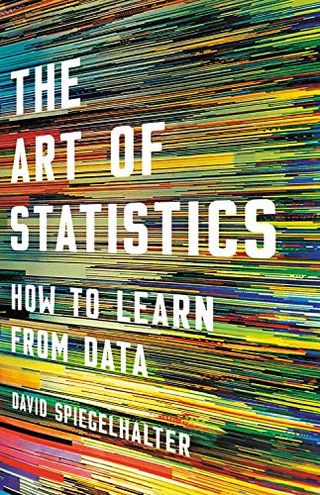
The Art of Statistics: How to Learn from Data
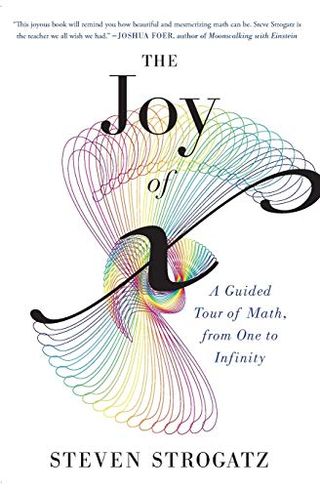
The Joy of x: A Guided Tour of Math, from One to Infinity
It would be about another 70 years before this list of logarithms became associated with exponents. In 1683, Swiss mathematician Jacob Bernoulli discovered the constant e while solving a financial problem related to compound interest. He saw that across more and more compounding intervals, his sequence approached a limit (the force of interest). Bernoulli wrote down this limit, as n keeps growing, as e.
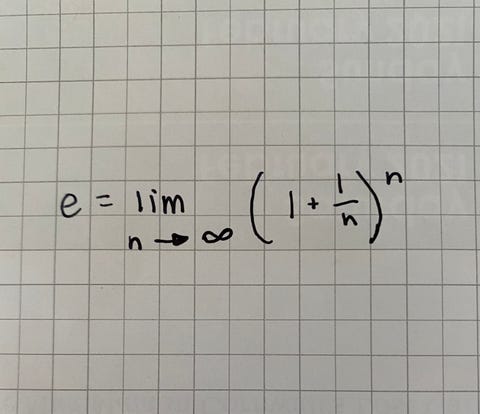
Courtney Linder/PM
Finally, in 1731, Swiss mathematician Leonhard Euler gave the number e its name after proving it's irrational by expanding it into a convergent infinite series of factorials.
Use Euler's Constant to Calculate Compounding Interest

ROBERT BROOK/SCIENCE PHOTO LIBRARY Getty Images
Because e is related to exponential relationships, the number is useful in situations that show constant growth.
One common example, which Bernoulli explored, is related to compound interest—the interest you pay on a loan when you include both the initial principal (the amount of the loan) and accumulated interest over previous periods in the calculation. It's why you can make a minimum payment on your credit card every month, yet never pay it off in full.
Suppose you put some money in the bank, and the bank compounds that money annually at a rate of 100 percent. After one year, you'd have twice the amount you invested.
This content is imported from {embed-name}. You may be able to find the same content in another format, or you may be able to find more information, at their web site.
Now suppose the bank compounds the interest every 6 months, but only offers half the interest rate, or 50 percent. In this case, you'd end up with 2.25 times your initial investment after one year.
Let's keep going. Suppose the bank offered 8.3 percent (1/12 of 100 percent) interest compounded every month, or 1.9 percent (1/52 of 100 percent) interest compounded every week. In that case, you'd make 2.61 and 2.69 times your investment.
Let's write an equation for this. If we make n equal to the number of times that interest is compounded, then the interest rate is the reciprocal, or 1/n. The equation for how much money you'd make in a year is (1+1/n)n. For example, if your interest is compounded five times per year, you'd make (1+⅕)5 = (1+0.2)5 = (1.2)5 = 2.49 times your initial investment.
To calculate compound interest, use the equation: A = P(1 + r/n)^n, where A = the final amount, P = the initial principal balance, r is the interest rate, n is the number of times that interest is applied in a given time period, and t is the number of time periods elapsed.
So what happens if n gets really big? Say, infinity big? This is the question Bernoulli was trying to answer, but it took 50 years for Euler to come along and solve it. It turns out the answer is the irrational number e, which is about 2.71828….
What Else Can You Do with Euler's Constant?
Euler's constant isn't just helpful in finance. Some other common use cases include:
☐ Probability theory: If you play a game of roulette, and you bet on a single number, the probability you'd lose every game, across the span of 37 games, is about 1/e.
☐ Calculating the half-life of radioactive chemicals.
☐ Equations for waves (like light, sound, and quantum waves) in physics.
🎥 Now Watch This:
Courtney Linder Senior Editor Before joining Pop Mech, Courtney was the technology reporter at her hometown newspaper, the Pittsburgh Post-Gazette.
This content is created and maintained by a third party, and imported onto this page to help users provide their email addresses. You may be able to find more information about this and similar content at piano.io
What Is E Mathematical Constant Pdf
Source: https://www.popularmechanics.com/science/math/a24383/mathematical-constant-e/
Posted by: radfordborre1967.blogspot.com

0 Response to "What Is E Mathematical Constant Pdf"
Post a Comment